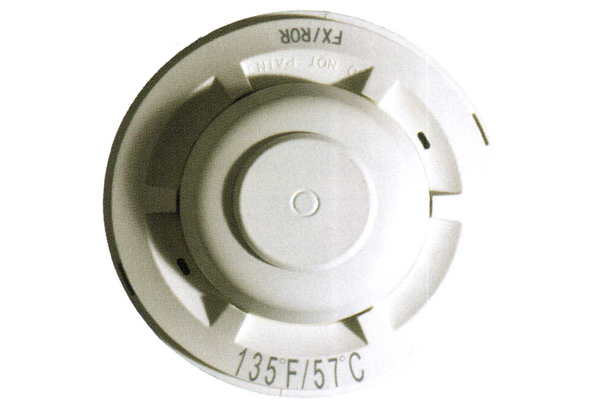
Complete your security system with a monitored smoke detector.
Fire can strike anyone, anywhere, anytime. It won't be frightened by an alarm, like a burglar would. The burglar won't steal your family photo album, but a fire will. Jewelry can be replaced, but baby pictures can't. Even if you have a monitored security system, without monitored smoke detectors your home will never be secure against one of the most dangerous intruders of all: fire.
Monitored smoke detectors signal the Central Monitoring Station for response by Fire Authorities when they activate. (Note: Many homeowners moving into a new home erroneously assume that their smoke detectors are monitored when in fact they may be stand-alone. It pays to find out.)
Standalone vs Monitored
Smoke Detectors
Stand-alone smoke detectors operate on 110VAC with a 9-volt battery back-up. They are usually installed by the electrician while the home was being built. They are connected in parallel with a trailing wire that enables for all of them to sound if any one of them activates. Unfortunately, if they activate accidentally, there is no way to silence the noise until the smoke dissipates from the unit. The 9-volt battery in each detector must be replaced periodically. The smoke detectors emit a loud “chirping” noise when the batteries are low to call attention to their need for service. They are made to stand-alone and cannot be connected to any signaling fire alarm system for fire department response.
Monitored smoke detectors installed by alarm companies are installed in series with an end-of-line supervisory device. The fire alarm control panel to which they are attached needs to see that end-of-line supervisory device, which supervises all the wiring in the system. If any wire to any smoke detector is separated or not connected properly, a “trouble signal” occurs at the customer’s pushbutton keypad and at the Central Monitoring Station to call attention to the problem. Power to the smoke detectors is supervised also because their operating power comes from the control panel. With hardwired smoke detectors, there are no batteries to change in the smoke detectors themselves, ever, because their back-up power comes from the control panel’s battery which is monitored during the weekly communication test to the Central Monitoring Station.

Smoke Detectors
Smoke detectors detect particles of smoke in the early stages of fire. They should be located throughout the house, at least one per level. They should not be located in dusty areas, or areas that reach temperatures below 32 degrees Fahrenheit, such as unheated garages or detached sheds. Nor can they be located in attics where temperatures can reach 140 degrees to 150 degrees Fahrenheit in the middle of summer.

Heat Detectors
Heat detectors should be installed in areas that smoke detectors would not perform well. They are suitable for unheated garages and dusty areas. Specially designed high temperature heat detectors are available for attic applications and highly recommended if HVAC equipment is located there. Although not as fast-acting as smoke detectors, they provide stable fire protection.